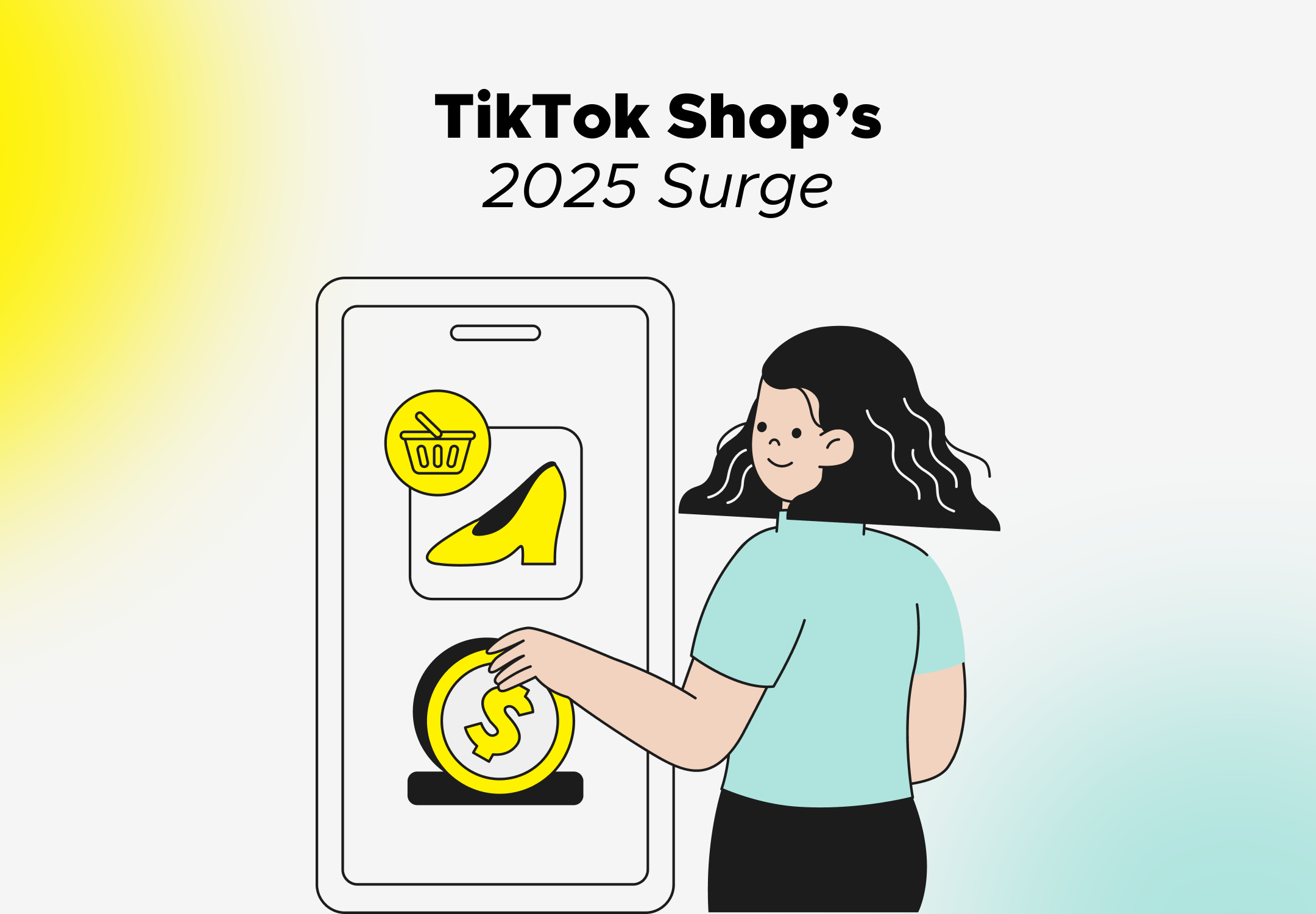10 Gen Z truths that will shape Black Friday spending
Gen Z is rewriting the rules of Black Friday shopping, blending digital-first behaviours with strategic deal-hunting that's forcing retailers to rethink everything. Here's what you need to know about the generation that's keeping Black Friday alive whilst transforming it completely.
October 16, 2025

Black Friday isn’t what it used to be. Whilst older generations increasingly start their holiday shopping in October or even earlier, Gen Z is keeping the Black Friday tradition alive in ways that might surprise you. Understanding Gen Z Black Friday trends has become essential for retailers who want to capture the attention of this digitally native, value-conscious generation. Here are ten fundamental truths about Gen Z shopping behavior that will define Black Friday success in 2025.
1. Black Friday still matters to Gen Z
Despite the broader shift towards earlier holiday shopping, Gen Z consumers remain loyal to Black Friday as the official start of the season, with nearly one in five citing it as their preferred shopping period compared to just 11% of consumers overall, according to McKinsey’s ConsumerWise survey. This isn’t mere nostalgia – it’s strategic. Gen Z has less disposable income than older generations, making them particularly value-driven shoppers who wait for peak sales events to stretch their limited budgets further. For them, Black Friday represents the perfect storm of maximum savings and social relevance.
What makes this particularly interesting is how it contradicts the general market trend. Looking at shopping intentions for 2025, Pion’s Youth Spend Report reveals that 84% of US students plan to shop on Black Friday compared to 78% of UK students, demonstrating that this generation views the event as unmissable. Understanding these Gen Z buying habits 2025 patterns means recognising that whilst other demographics scatter their shopping across months, Gen Z concentrates their spending power into specific high-value moments.
2. The hunt begins weeks before the event
Forget spontaneous shopping sprees. Nearly 40% of Gen Z shoppers enter “reconnaissance mode” a full month before Black Friday, actively scouting deals and comparing prices across platforms, Pion’s research shows. This extended research phase fundamentally changes how Gen Z shops compared to previous generations. They’re not just browsing – they’re building wishlists, following brands on social media, and setting price alerts.
Between 15% and 18% of young shoppers believe the best deals actually happen before Black Friday itself, according to Pion’s findings, which means retailers who wait until the last minute risk missing out entirely. The Gen Z spending habits reveal a generation that treats Black Friday shopping like a step-by-step operation: planned, researched, and executed with precision.
3. Digital dominance reigns supreme
60% of Gen Z spending happens digitally, Pion reports, and this preference shapes everything from how retailers design their Black Friday ecommerce trends to which platforms they prioritise. The comfort of shopping in pyjamas whilst comparing multiple websites simultaneously beats any in-store experience Gen Z can imagine.
But here’s where it gets interesting: UK students are more likely to buy through brand apps than their US counterparts, with 21% using apps compared to 14% in America, according to Pion’s Youth Spend Report. This means app optimisation isn’t just nice to have – it’s essential, particularly for brands targeting the UK market. Mobile-first experiences with smooth navigation, easy price comparison, and accessible reviews are non-negotiable elements of successful Black Friday marketing trends.
4. Social media serves as the shopping oracle
52% of Gen Z discover products on social media, nearly double the 30% average across all consumers, according to Impact’s 2025 Black Friday Consumer Report. But the story becomes more nuanced when you examine platform preferences. Female students are twice as likely to find inspiration on TikTok, whilst male students turn to YouTube as their number one platform for shopping ideas in the US, Pion’s research reveals.
Understanding Black Friday social media influence means recognising that 43% of Gen Z use social platforms specifically to hunt for discount codes, whilst 37% of US students look to creators for gift ideas, according to Pion. This transforms influencer marketing Black Friday campaigns from optional extras into core strategy. Successful TikTok Black Friday campaigns require authentic creator partnerships, platform-specific content, and discount codes that are genuinely easy to find and use.
5. The deal-hunting mission is intensifying
61% of US students and 58% of UK students plan to search even harder for discounts in 2025, making this year’s Black Friday more competitive than ever, Pion’s Youth Spend Report indicates. This isn’t casual browsing – it’s a dedicated mission driven by economic pressures and rising costs of living.
What does “searching harder” actually mean? It means comparing prices across multiple retailers, waiting for the perfect moment to purchase, abandoning baskets when better deals appear, and using every available tool – from browser extensions to AI assistants – to ensure they’re getting genuine value. The Black Friday consumer trends show that Gen Z won’t be fooled by inflated prices masquerading as discounts.
6. Payment flexibility is non-negotiable
Buy Now, Pay Later isn’t just another payment option for Gen Z – it’s often the deciding factor in whether a purchase happens at all. Payment flexibility stands out as particularly important, with Buy Now, Pay Later services being especially popular amongst UK male students, Pion’s research shows. This preference reflects both the financial pressures this generation faces and their comfort with digital financial tools.
Retailers who fail to offer diverse payment options aren’t just missing out on convenience points – they’re actively losing sales. The gen z marketing strategy must include prominent BNPL options, clearly communicated installment plans, and early promotions that help young shoppers budget in advance, giving them greater control over their spending.
7. Authenticity separates winners from losers
Gen Z is onto misleading deals and sneaky marketing ploys, and they don’t trust brands who employ these tactics, according to Pion’s insights. This generation has grown up with ad blockers and influencer controversies – they’re remarkably adept at spotting inauthenticity from a mile away.
What erodes trust? Fake countdown timers, artificially inflated “original” prices, overwhelming email bombardment, and deals that aren’t genuinely better than regular sales. Some Gen Z shoppers are starting to feel apprehensive about Black Friday, with one student describing the event as “overwhelming” due to “too much choice”, Pion reports. Brands that win with Gen Z do so by being transparent about their pricing, offering genuine value, and respecting their customers’ intelligence.
Sign up to our upcoming Masterclass: 3 ways to be authentic on social here
8. Reviews and social proof drive decisions
Gen Z shoppers want brands to make it easy for them to compare prices and read reviews, as a good review may seal the deal even when a tempting discount is on offer, Pion’s research indicates. This generation doesn’t just want to know a product is cheap – they want to know it’s worth buying.
The influence of social proof extends beyond traditional review platforms. Customer reviews on social media influence 64% of social and subscription shoppers, according to DHL’s E-Commerce Trends Report, making real voices more powerful than polished advertising. This reality demands that retailers integrate user-generated content, showcase authentic testimonials, and make review sections easily accessible throughout the purchase journey.
9. The cultural moment matters
Black Friday hauls make for shareable social media moments, contributing to a feeling of digital camaraderie that random October discounts simply cannot offer. This communal aspect transforms Black Friday from a mere shopping event into a cultural phenomenon that Gen Z actively wants to participate in.
In 2024, one platform popular with Gen Z saw 30,000 livestreams and billions of views on Black Friday content, according to ContentGrip’s analysis. This isn’t passive consumption – it’s active engagement. Successful pulse advertising Black Friday campaigns tap into this desire for shared experiences by creating content that’s entertaining, shareable, and community-focused rather than just transactional.
10. Categories and formats must align with Gen Z priorities
Whilst Black Friday traditionally focuses on electronics and home goods, Gen Z holiday shopping patterns reveal different priorities. Fashion, health and beauty, technology, travel, and food and drink consistently rank amongst their favourite categories, Pion’s Youth Spend Report shows. But how they want to receive information about deals matters just as much as what’s on offer.
Gen Z consumers are most drawn to percentage discounts on single items, with 18% citing this as their preferred deal type, according to Impact’s Consumer Report. They also value transparency and flexibility – knowing exactly what they’re saving and having options that fit their budget. The most effective social commerce Black Friday strategies recognise that this generation wants choice without chaos, value without manipulation, and deals that genuinely deliver on their promises.
The bottom line
Understanding these ten truths about Gen Z Black Friday behaviour isn’t just about capturing short-term sales – it’s about building relationships with the consumers who will define retail’s future. This generation approaches Black Friday with a unique combination of strategic planning, digital savvy, social consciousness, and value-seeking behaviour that demands respect rather than manipulation.
The brands that will succeed with Gen Z are those that meet them where they are: on mobile devices and social platforms, with authentic messaging and genuine deals, offering payment flexibility and transparent pricing, and creating experiences that feel like community moments rather than corporate sales events. Black Friday 2025 belongs to the retailers who understand that Gen Z isn’t just shopping for products – they’re shopping for brands that get them.
Latest News ☕

The Oscars move to YouTube in 2029
December 22, 2025
The Academy Awards' shift from ABC to YouTube in 2029 represents the definitive moment whe...

10 resolutions every marketer should have for their social strategy in 2026
December 20, 2025
Transform your social media strategy in 2026 with these actionable resolutions from Pulse...

Social commerce 2025 year in review: TikTok Shop growth & marketing trends
December 17, 2025
Social commerce isn't just growing – it's where creators and brands now thrive. Our year...


